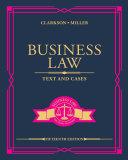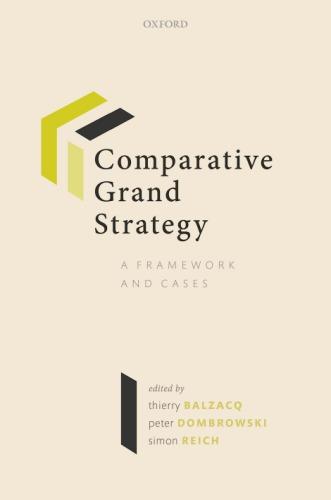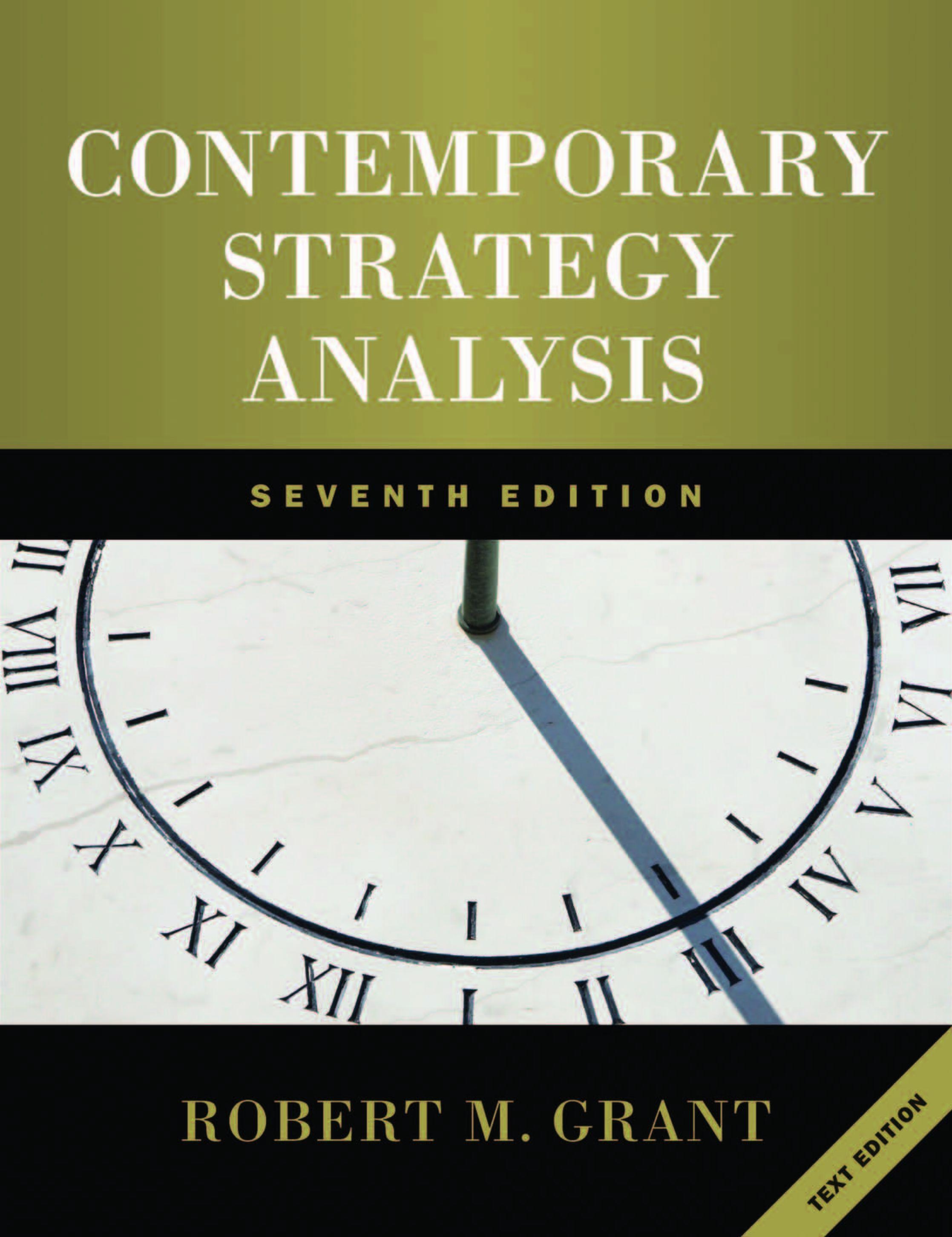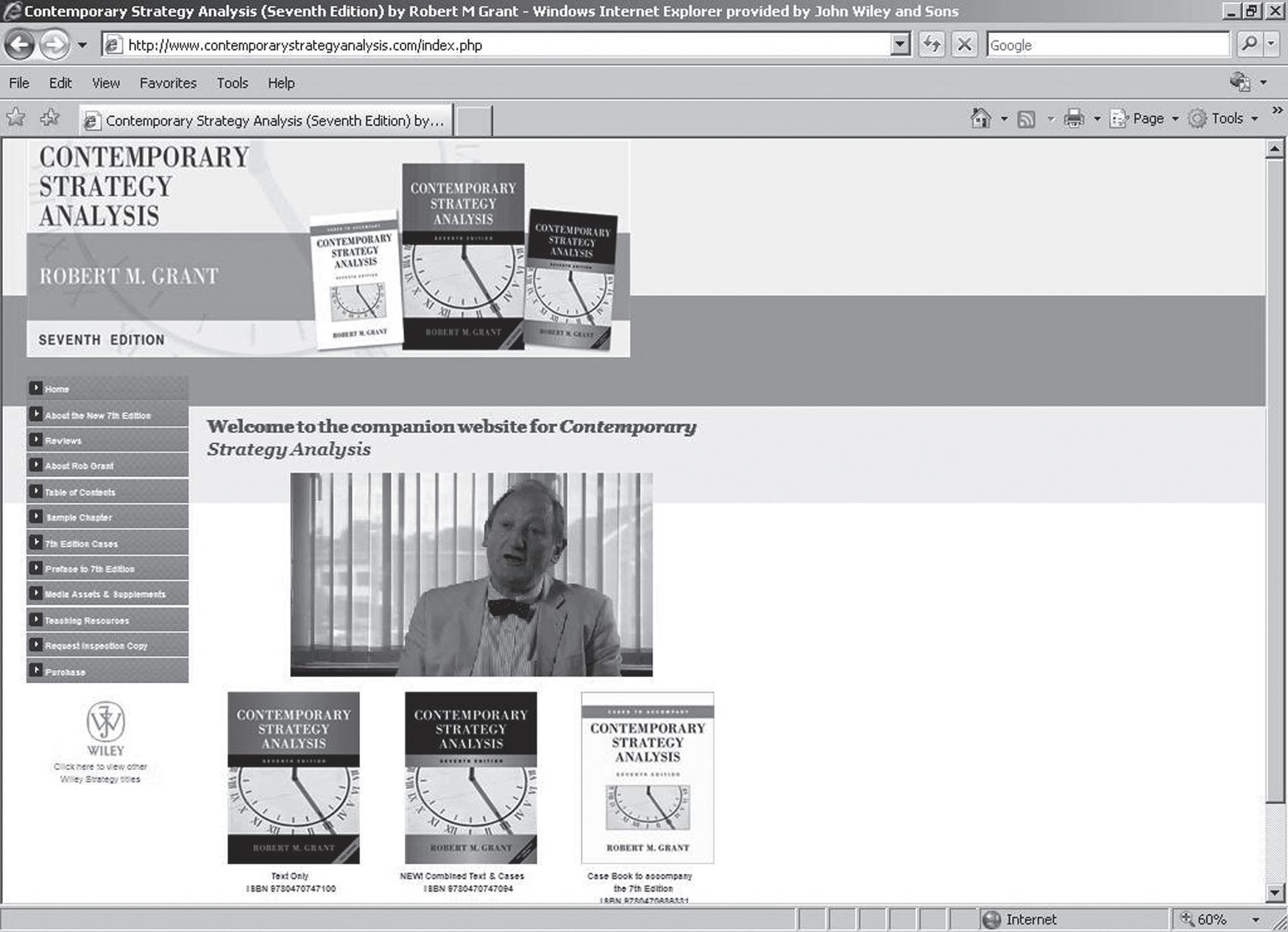The Role of Strategy in Success
Strategy Capsules 1.1, 1.2, and 1.3 outline examples of success in three very different arenas: Madonna in popular entertainment, General Giap and the North Vietnamese armed forces in warfare, and Lance Armstrong in cycling. Can the success of these diverse individuals and the organizations they led be attributed to any common factors?
STRATEGY CAPSULE 1.1
The fifty-first birthday of Madonna Louise Veronica Ciccone on August 16, 2009 offered no respite from her hectic work schedule. The day before she had performed the 71st concert in her Sweet and Sticky world tour; a tour that would gross over $400 million. For yet another year it seemed unlikely that Madonna would be displaced in the Guinness Book of Records as the world’s top-earning female entertainer and most successful female recording artist of all time.
In the summer of 1978, aged 19, Madonna arrived in New York with $35 to her name. After five years of struggle, she landed a recording contract. Madonna (1983) ultimately sold 10 million copies worldwide, while Like a Virgin (1984) topped 12 million copies. Between 1985 and 1990, six further albums, three world tours, and five movie roles had established Madonna with an image and persona that transcended any single field of entertainment: she was rock singer, actor, author, and pinup. Yet, she was more than this—as her website proclaims, she is “icon, artist, provocateur, diva, and mogul.” She has also made a great deal of money.
What is the basis of Madonna’s incredible and lasting success? Certainly not outstanding natural talent. As a vocalist, musician, dancer, songwriter, or actress, Madonna’s talents seem
modest. Few would regard her as an outstanding beauty.
She possesses relentless drive. Her wide range of activities—records, concerts, music videos, movies, books, and charity events—are unified by her dedication to a single goal: the quest for superstar status. “Even as a little girl, I knew I wanted the whole world to know who I was.” She is widely regarded as a workaholic who survives on little sleep and rarely takes vacations: “I am a very disciplined person. I sleep a certain number of hours each night, then I like to get up and get on with it. All that means that I am in charge of everything that comes out.”
She has drawn heavily on the talents of others: writers, musicians, choreographers, and designers. Many of her personal relationships have been stepping stones to career transitions. Her transition from dance to music was assisted by relationships, first, with musician Steve Bray, then with disc jockey John Benitex. Her entry into Hollywood was accompanied by marriage to Sean Penn and an affair with Warren Beatty. Most striking has been continuous reinvention of her image. From the street-kid look of the early 1980s, to the hard-core sexuality of the 90s, to the Madonna-with-children spirituality of the past decade, her fans have been treated to
Madonna
multiple reincarnations. As Jeff Katzenberg of Dreamworks observed: “She has always had a vision of exactly who she is, whether performer or businesswoman, and she has been strong enough to balance it all. Every time she comes up with a new look it is successful. When it happens once, OK, maybe it’s luck, but twice is a coincidence, and three times it’s got to be a remarkable talent. And Madonna’s on her fifth or sixth time.”
She was quick to learn the ropes both in Tin Pan Alley and in Hollywood. Like Evita Perón, whom Madonna portrayed in Evita, Madonna has combined determination, ambition, social
acumen, and mastery of the strategic use of sex. As a self-publicist she is without equal, using nudity, pornography, bisexuality, spirituality and philanthropy as publicity tools. She is also astute at walking the fine line between the shocking and the unacceptable. Through Maverick Inc., a joint venture with Time Warner, she has been able to control her own creative output and also manage and develop younger entertainers and musicians. Her 2007, $120million contract with Live Nation revealed her understanding of the shifting of economic power from recorded music to live performances.
STRATEGY CAPSULE 1.2
General Giap and the Vietnam Wars, 1948–75
As far as logistics and tactics were concerned, we succeeded in everything we set out to do. At the height of the war the army was able to move almost a million soldiers a year in and out of Vietnam, feed them, clothe them, house them, supply them with arms and ammunition and generally sustain them better than any army had ever been sustained in the field . . . On the battlefield itself, the army was unbeatable. In engagement after engagement the forces of the Vietcong and the North Vietnamese Army were thrown back with terrible losses. Yet, in the end, it was North Vietnam, not the United States that emerged victorious. How could we have succeeded so well yet failed so miserably?
Despite having the largest army in Southeast Asia, North Vietnam was no match for South
Vietnam so long as the south was backed by the world’s most powerful military and industrial nation. South Vietnam and its U.S. ally were defeated not by superior resources but by a superior strategy. North Vietnam achieved what Sun Tzu claimed was the highest form of victory: the enemy gave up.
The master of North Vietnam’s military strategy was General Vo Nguyen Giap. In 1944, Giap became head of the Vietminh guerrilla forces. He was commander-in-chief of the North Vietnamese Army until 1974 and Minister of Defense until 1980. Giap’s strategy was based on Mao Tse Tung’s three-phase theory of revolutionary war: first, passive resistance to mobilize political support; second, guerrilla warfare aimed at weakening the enemy and building military strength; finally, general counteroffensive. In 1954, Giap’s brilliant victory over the French at Dien Bien Phu fully vindicated
the strategy. Against the U.S., the approach was similar.
Our strategy was . . . to wage a longlasting battle . . . Only a long-term war could enable us to utilize to the maximum our political trump cards, to overcome our material handicap, and to transform our weakness into strength. To maintain and increase our forces was the principle to which we adhered, contenting ourselves with attacking when success was certain, refusing to give battle likely to incur losses.
The strategy built on the one resource where the communists had overwhelming superiority: their will to fight. As Prime Minister Pham Van Dong explained: “The United States is the most powerful nation on earth. But Americans do not like long, inconclusive wars . . . We can outlast them and we can win in the end.” Limited military engagement and the charade of the Paris peace talks helped the North Vietnamese prolong the conflict, while diplomatic efforts to isolate the U.S. from its Western allies and to
sustain the U.S. peace movement accelerated the crumbling of American will.
The effectiveness of the U.S. military response was limited by two key uncertainties: what the objectives were and who the enemy was. Was the U.S. role one of supporting the South Vietnamese regime, fighting Vietcong terrorism, inflicting a military defeat on North Vietnam, conducting a proxy war against the Soviet Union, or combating world communism?
The consistency and strength of North Vietnam’s strategy allowed it to survive errors in implementation. Giap was premature in launching his general offensive. Both the 1968 Tet Offensive and 1972 Easter Offensive were beaten back with heavy losses. By 1974, U.S. resistance had been sapped by the Watergate scandal On April 29, 1975, Operation Frequent Wind began evacuating all remaining Americans from South Vietnam, and the next morning North Vietnamese troops entered the Presidential Palace in Saigon.
Sources: Col. Harry G. Summers Jr., On Strategy (Novato, CA: Presidio Press, 1982): 1; Vo Nguyen Giap, Selected Writings (Hanoi: Foreign Language Publishing House, 1977); J. Cameron, Here Is Your Enemy (New York: Holt, Rinehart, Winston, 1966).
STRATEGY CAPSULE 1.3
Lance Armstrong and the Tour de France
On July 24, 2005, Lance Armstrong became the first person to win the Tour de France seven times. His achievement was all the more remarkable for the fact that he had recovered from testicular cancer that had spread to his lungs and brain.
Even without cancer, Lance Armstrong was not an obvious candidate for title of the
greatest cyclist ever. Despite certain natural advantages—notably a heart 30% larger than normal with an abnormally slow beat rate (32 times per minute while at rest)—Armstrong’s aerobic rate was less than that of cycling greats such as Miguel Indurain and Greg LeMond. For most of his career, Armstrong was not the world’s pre-eminent cyclist. He won the world
championship just once (1993) and his Olympic best was a bronze medal in the 2000 Sydney games.
Armstrong’s seven-year dominance of the Tour de France resulted from a combination of factors, not least of which was his singleminded focus, not just on cycling, but on a single race: between his seven Tour de France victories, Armstrong won only five other races.
Armstrong raised planning for the Tour to new levels of sophistication: with meticulous attention to training, diet and calorific intake and expenditure. His all-round abilities as a cyclist, mental resilience, and mastery of bluff and psychological warfare were well suited tothe requirements of the Tour. His feigning exhaustion at critical junctures before devastating his rivals with a powerful breakaway has been deemed “worthy of a Hollywood Oscar.” However, it was in team planning and coordination where the major differences between Armstrong and his competitors were most evident.
The principal prize in the Tour de France is for the individual who achieves the fastest overall time, but cyclists compete within teams. Team coordination and the willingness of the other team members ( domestiques ) to sacrifice themselves for the leader is critical to individual success. Armstrong’s U.S. Postal Service team (which became the Discovery Channel team for the 2005 Tour) was remarkable not just for the quality of other team members but for the willingness of these world-class cyclists to serve their leader. Olympic gold medal winner Viatcheslav Ekimov—”The Russian Power House”—was critical to pulling Armstrong
through the flatter stages of the Tour. Roberto Heras and Jose Asevedo defended Armstrong in the mountains—shielding him from the wind and supporting him during breakaways. George Hinkapie rode in all seven of Armstrong’s Tour victories as a versatile all-rounder. Why did the team show a unique degree of loyalty to their team leader? Part was Armstrong’s infectious commitment; part was his willingness to pay bonuses out of his own pocket to other riders, but also important was reciprocity—while team members gave total support to Armstrong on the Tour de France, in other competitions the roles were reversed and Armstrong served as a domestique to other team members.
The team’s master planner was director, Johan Bruyneel, whose unrivaled knowledge of the Tour spanned sports physiology, game theory, psychology, and tactics. As well as team selection, role assignment, and discipline, Bruyneel managed a network of secret agreements with other teams. In return for financial support, other teams agreed to support Armstrong should he find himself split from his own team members. Bruyneel gave particular attention to team dynamics: fostering loyalty, camaraderie discussion, and shared emotions to overcome the notorious individualism of professional cyclists.
Armstrong’s decision to come out of retirement electrified the 2009 Tour. In the Astana team, Armstrong rejoined Bruyneel and other former USPS/Discovery riders—but with one difference: Alberto Contador was team leader, not Armstrong. Contrador duly won the 2009 Tour de France; Lance Armstrong in third place.
For none of these three examples can success be attributed to overwhelmingly superior resources:
● Madonna possesses vitality, intelligence and magnetism, but lacks outstanding talents as a vocalist, musician or actress.
● The military, human, and economic resources of the Vietnamese communists were dwarfed by those of the U.S. and South Vietnam. Yet, with the U.S. evacuation from Saigon in 1975, the world’s most powerful nation was humiliated by one of the world’s poorest.
● Lance Armstrong possessed a powerful combination of physical and psychological attributes. Yet these endowments were not markedly superior to other top-class cyclists—especially after Armstrong’s near-death encounter with cancer.
Nor can their success be attributed either exclusively or primarily to luck. For all three, lucky breaks provided opportunities at critical junctures. None, however, was the beneficiary of a consistent run of good fortune. More important than luck was the ability to recognize opportunities when they appeared and to have the clarity of direction and the flexibility necessary to exploit these chances.
My contention is that the key common ingredient in all three success stories was the presence of a soundly formulated and effectively implemented strategy. These strategies did not exist as a plan; in most the strategy was not even made explicit. Yet, in all three, we can observe a consistency of direction based on a clear understanding of the “game” being played and a keen awareness of how to maneuver into a position of advantage.
● Underpinning Madonna’s many years as a superstar has been a strategy built on dedication, opportunism, reinvention of herself and a well-coordinated multimarket presence.
● The victory of the Vietnamese communist forces over the French and then the Americans is a classic example of how a sound strategy pursued with total commitment over a long period can succeed against vastly superior resources. The key was Giap’s strategy of a protracted war of limited engagement. With the U.S. constrained by domestic and international opinion from unleashing its full military might, the strategy was unbeatable once it began to sap the willingness of the U.S. government to persevere with a costly, unpopular foreign war.
● Lance Armstrong’s domination of the Tour de France from 1999 to 2005 was because he and his team did the most effective job of analyzing the requirements for success in the race, developing a strategy around those requirements and executing it almost faultlessly.
We can go further. What do these examples tell us about the characteristics of a strategy that are conducive to success? In all three stories, four common factors stand out (see Figure 1.1):
1 Goals that are simple, consistent, and long term. All three individuals displayed a single-minded commitment to a clearly recognized goal that was pursued steadfastly over a substantial part of their lifetime.
● Madonna’s career featured a relentless drive for stardom in which other dimensions of her life were absorbed within her career.
● North Vietnamese efforts were unified and focused on the ultimate goal of reuniting Vietnam under communist rule and expelling a foreign army
FIGURE 1.1 Common elements in successful strategies
Successful strategy
EFFECTIVEIMPLEMENTATION
Simple, consistent, long-term goals
Profound understanding of the competitive environment
Objective appraisal ofresources
from Vietnamese soil. By contrast, U.S. efforts in Vietnam were bedeviled by confused objectives.
● On his return to professional cycling in 1998, Lance Armstrong committed to a single goal: winning the Tour de France.
2 Profound understanding of the competitive environment. All three individuals designed their strategies around a deep and insightful appreciation of the arena in which they were competing.
● Fundamental to Madonna’s continuing success has been a shrewd understanding of the ingredients of stardom and the basis of popular appeal. This extends from the basic marketing principle that “sex sells” to recognition of the need to manage gatekeepers of the critical media distribution channels. Her periodic reincarnations reflect an acute awareness of changing attitudes, styles, and social norms.
● Giap understood his enemy and the battlefield conditions where he would engage them. Most important was appreciation of the political predicament of U.S. presidents in their need for popular support in waging a foreign war.
● Lance Armstrong and team director Johan Bruyneel took analysis of the requirements for success in the Tour de France to unprecedented levels of detail and sophistication.
3 Objective appraisal of resources. All three strategies were effective in exploiting internal strengths, while protecting areas of weakness.
● By positioning herself as a “star,” Madonna exploited her abilities to develop and project her image, to self-promote and to exploit emerging trends while avoiding being judged simply as a rock singer or an actress. Her live performances rely heavily on a large team of highly qualified dancers, musicians, vocalists, choreographers and technicians, thus compensating for any weaknesses in her own performing capabilities.
● Giap’s strategy was carefully designed to protect against his army’s deficiencies in arms and equipment while exploiting the commitment and loyalty of his troops.
● Armstrong’s campaign to win the Tour de France was based on two key strengths: unmatched determination to win and superior team-building capability.
4 Effective implementation. Without effective implementation, the best-laid strategies are of little use. Critical to the success of Madonna, Giap, and Armstong was their effectiveness as leaders in terms of their capacity to reach decisions, energy in implementing them, and ability to foster loyalty and commitment among subordinates. All three built organizations that allowed effective marshaling of resources and capabilities and quick responses to changes in the competitive environment.
These observations about the role of strategy in success can be made in relation to most fields of human endeavor. Whether we look at warfare, chess, politics, sport, or business, the success of individuals and organizations is seldom the outcome of a purely random process. Nor is superiority in initial endowments of skills and resources typically the determining factor. Strategies that build on the basic four elements almost always play an influential role.
Look at the “high achievers” in any competitive area. Whether we review the world’s political leaders, the CEOs of the Fortune 500, or our own circles of friends and acquaintances, those who have achieved outstanding success in their careers are seldom those who possessed the greatest innate abilities. Success has gone to those who managed their careers most effectively—typically by combining the four strategic factors mentioned above. They are goal focused; their career goals have taken primacy over the multitude of life’s other goals—friendship, love, leisure, knowledge, spiritual fulfillment—which the majority of us spend most of our lives juggling and reconciling. They know the environments within which they play and tend to be fast learners in terms of understanding the keys to advancement. They know themselves in terms of both strengths and weaknesses, and they implement their career strategies with commitment, consistency and determination. As the late Peter Drucker observed: “we must learn how to be the CEO of our own careers.”4
There is a downside, however. Focus on a single goal may lead to outstanding success, but may be matched by dismal failure in other areas of life. Many people who have reached the pinnacles of their careers have led lives scarred by poor relationships with friends and families and stunted personal development. These include Howard Hughes and Jean Paul Getty in business, Richard Nixon and Joseph Stalin in politics, Marilyn Monroe and Elvis Presley in entertainment, Joe Louis and O. J. Simpson in sport, and Bobby Fischer in chess. Fulfillment in our personal lives is likely to require broad-based lifetime strategies.5
These same ingredients of successful strategies—clear goals, understanding the competitive environment, resource appraisal and effective implementation—form the key components of our analysis of business strategy.
The Basic Framework for Strategy Analysis
Figure 1.2 shows the basic framework for strategy analysis that we shall use throughout the book. The four elements of a successful strategy shown in Figure 1.1 are recast into two groups—the firm and the industry environment—with strategy forming a link between the two. The firm embodies three sets of these elements:
FIGURE 1.2 The basic framework: strategy as a link between the firm and its environment
THE FIRM
Goalsand values
Resourcesand capabilities
Structureand systems
STRATEGY
THE INDUSTRY ENVIRONMENT
Competitors
Customers
Suppliers
goals and values (“simple, consistent, long-term goals”), resources and capabilities (“objective appraisal of resources”), and structure and systems (“effective implementation”). The industry environment (“profound understanding of the competitive environment”) is defined by the firm’s relationships with customers, competitors and suppliers.
This view of strategy as a link between the firm and its industry enviroment has close similarities with the widely used, but inferior, SWOT Framework (see strategy capsule 1.4).
The task of business strategy, then, is to determine how the firm will deploy its resources within its environment and so satisfy its long-term goals, and how to organize itself to implement that strategy.
STRATEGY CAPSULE 1.4
What’s Wrong with SWOT?
Distinguishing between the external and the internal environment of the firm is common to most approaches to strategy analysis. The best known and most widely used of these approaches is the “SWOT” framework, which classifies the various influences on a firm’s strategy into four categories: Strengths, Weaknesses, Opportunities, and Threats. The first two—strengths and weaknesses—relate to the internal environment; the last two—opportunities and threats—relate to the external environment.
Which is better, a two-way distinction between internal and external influences or the four-way SWOT taxonomy? The key issue is
whether it is sensible and worthwhile to classify internal factors into strengths and weaknesses and external factors into opportunities and threats. In practice, such distinctions are difficult:
● Is Steve Jobs a strength or a weakness for Apple? As both founder and reincarnator of Apple, few major companies owe so much to a single person. Yet, having suffered pancreatic cancer and the subject of continuing health concerns, Jobs is also a critical source of vulnerability for Apple.
● Is global warming a threat or an opportunity to the world’s automobile
producers? Global warming may encourage governments to raise taxes on motor fuels and support public transport, thereby threatening the demand for private motoring. At the same time, these circumstances create an opportunity for developing new, fuel-efficient cars that may encourage consumers to scrap their gas-guzzlers.
The lesson here is that an arbitrary classification of external factors into opportunities and
threats, and internal factors into strengths and weaknesses, is less important than a careful identification of these external and internal factors followed by an appraisal of their implications. My approach to strategy analysis favors a simple two-way classification of internal and external factors. What will characterize our strategic appraisal will be the rigor and depth of our analysis of these factors, rather than a superficial categorization into strengths or weaknesses, and opportunities or threats.
Strategic Fit
Fundamental to this view of strategy as a link between the firm and its external environment is the notion of strategic fit. For a strategy to be successful, it must be consistent with the firm’s external environment, and with its internal environment— its goals and values, resources and capabilities, and structure and systems. As we shall see, the failure of many companies is caused by lack of consistency with either the internal or external environment. General Motors’ long-term decline is a consequence of a strategy that has failed to break away from its long-established ideas about multibrand market segmentation and adapt to the changing market for automobiles. In other cases, many companies have failed to align their strategies to their internal resources and capabilities. A critical issue for Nintendo in the coming years will be whether it possesses the financial and technological resources to continue to compete head-to-head with Sony and Microsoft in the market for video game consoles.
As you will discover, the notion of strategic fit extends beyond the simple notion that strategy must fit with the external and the internal environment of the firm. The principles of strategic fit extend to organizational design—what is called contingency theory (see Chapter 7) and the view of the firm as a system of interlinked activities (see the discussion of contextuality in Chapter 8 and complementarity in Chapter 11).
A Brief History of Business Strategy
Origins and Military Antecedents
Enterprises need business strategies for much the same reasons that armies need military strategies—to give direction and purpose, to deploy resources in the most effective manner and to coordinate the decisions made by different individuals. Many of the concepts and theories of business strategy have their antecedents in military strategy. The term strategy derives from the Greek word strategia, meaning
“generalship.” However, the concept of strategy did not originate with the Greeks. Sun Tzu’s classic The Art of War, written circa 500 BC, is regarded as the first treatise on strategy.6
Military strategy and business strategy share a number of common concepts and principles, the most basic being the distinction between strategy and tactics. Strategy is the overall plan for deploying resources to establish a favorable position; a tactic is a scheme for a specific action. Whereas tactics are concerned with the maneuvers necessary to win battles, strategy is concerned with winning the war. Strategic decisions, whether in military or business spheres, share three common characteristics:
● they are important
● they involve a significant commitment of resources
● they are not easily reversible.
Many of the principles of military strategy have been applied to business situations. These include the relative strengths of offensive and defensive strategies; the merits of outflanking over frontal assault; the roles of graduated responses to aggressive initiatives; the benefits of surprise and the potential for deception, envelopment, escalation and attrition.7 At the same time, the differences between business competition and military conflict must be recognized. The objective of war is (usually) to defeat the enemy. The purpose of business rivalry is seldom so aggressive: most business enterprises limit their competitive ambitions, seeking coexistence rather than the destruction of competitors.
The tendency for the principles of military and business strategy to develop along separate paths indicates the absence of a general theory of strategy. The publication of Von Neumann and Morgenstern’s Theory of Games in 1944 gave rise to the hope that a general theory of competitive behavior would emerge. During the subsequent six decades, game theory has revolutionized the study of competitive interaction, not just in business but in politics, military conflict and international relations as well. Yet, as we shall see in Chapter 4, game theory has achieved only limited success as a practical and broadly applicable general theory of strategy.8
From Corporate Planning to Strategic Management
The evolution of business strategy has been driven more by the practical needs of business than by the development of theory. During the 1950s and 1960s, senior executives were experiencing increasing difficulty in coordinating decisions and maintaining control in companies that were growing in size and complexity. Financial budgeting, in the form of annual financial planning and investment appraisal provided short-term control and project selection but did little to guide the long-term development of the firm. Corporate planning (also known as long-term planning ) was developed during the late 1950s to serve this purpose. Macroeconomic forecasts provided the foundation for the new corporate planning. The typical format was a five-year corporate planning document that set goals and objectives, forecasted key economic trends (including market demand, the company’s market share, revenue, costs and margins), established priorities for different products and business areas of the firm, and allocated capital expenditures. The diffusion of corporate planning was accelerated by a flood of articles and books
addressing this new science.9 The new techniques of corporate planning proved particularly useful for developing and guiding the diversification strategies that many large companies were pursuing during the 1960s. By the mid-1960s , most large U.S. and European companies had set up corporate planning departments. Strategy Capsule 1.5 provides an example of such formalized corporate planning.
STRATEGY CAPSULE 1.5
Corporate Planning in a Large U.S. Steel Company, 1965
The first step in developing long-range plans was to forecast the product demand for future years. After calculating the tonnage needed in each sales district to provide the “target” fraction of the total forecast demand, the optimal production level for each area was determined. A computer program that incorporated the projected demand, existing production capacity, freight costs etc., was used for this purpose. When the optimum production rate in each area was found, the additional facilities needed to produce the desired tonnage were specified. Then the capital costs for the necessary equipment, buildings, and layout were estimated by the Chief
Engineer of the corporation and various district engineers. Alternative plans for achieving company goals were also developed for some areas, and investment proposals were formulated after considering the amount of available capital and the company debt policy. The Vice President who was responsible for long-range planning recommended certain plans to the President and, after the top executives and the Board of Directors reviewed alternative plans, they made the necessary decisions about future activities.
Source: Harold W. Henry, Long Range Planning Processes in Forty-five Industrial Companies (Englewood Cliffs, NJ: PrenticeHall, 1967): 65.
During the 1970s and early 1980s, confidence in corporate planning and infatuation with scientific approaches to management were severely shaken. Not only did diversification fail to deliver the anticipated synergies but the oil shocks of 1974 and 1979 ushered in a new era of macroeconomic instability, combined with increased international competition from resurgent Japanese, European, and Southeast Asian firms. Faced with a more turbulent business environment, firms could no longer plan their investments, new product introductions and personnel requirements three to five years ahead, simply because they couldn’t forecast that far into the future.
The result was a shift in emphasis from planning to strategy making, where the focus was less on the detailed management of companies’ growth paths than on positioning the company in markets and in relation to competitors in order to maximize the potential for profit. This transition from corporate planning to what became termed strategic management was associated with increasing focus on competition as the central characteristic of the business environment and competitive advantage as the primary goal of strategy.
This emphasis on strategy as a quest for performance directed attention to the sources of profitability. During the late 1970s and into the 1980s, attention focused on sources of profit within the industry environment. Michael Porter of Harvard Business School pioneered the application of industrial organization economics to analyzing industry profitability.10 Other studies focused on how profits were
distributed between the different firms in an industry—in particular the impact of market share and experience upon costs and profits.11 These two lines of inquiry— into interindustry and interfirm differences in profitability—were combined in the Strategic Planning Institute’s PIMS (Profit Impact of Market Strategy) project.12
During the 1990s, the focus of strategy analysis shifted from the sources of profit in the external environment to the sources of profit within the firm. Increasingly the resources and capabilities of the firm became regarded as the main source of competitive advantage and the primary basis for formulating strategy.13 This emphasis on what has been called the resource-based view of the firm represented a substantial shift in thinking about strategy. Rather than firms pursuing similar strategies, as in seeking attractive markets and favorable competitive positions, emphasis on internal resources and capabilities has encouraged firms to identify how they are different from their competitors and design strategies that exploit these differences. Michael Porter’s answer to the question “What is strategy?” emphasized that: “Competitive strategy is about being different. It means deliberately choosing a different set of activities to deliver a unique mix of value.”14
During the first decade of the twenty-first century, the principles and practice of strategy have been molded by the uniquely challenging circumstances of a new era. Technology has been a particularly potent force.15 The beginning of the decade saw the bursting of the TMT (technology, media, telecommunications) bubble and the realization that the “new knowledge economy” and internet-based business models did not require a rewriting of the principles of strategy. Nevertheless, technology continues to reshape industries: digital technologies are associated with standards wars,16 the emergence of “winner-take-all” markets, 17 and the potential for strategic innovation as firms seek the “blue oceans” of uncontested market space.18
In the face of continuous change and relentless competition, strategy becomes less about building positions of sustained competitive advantage and more about developing the responsiveness and flexibility to create successive temporary advantages. Reconfiguring resources and capabilities to achieve such responsiveness typically requires firms to collaborate within networks of strategic alliances.
The continuing traumas of the twenty-first century, including the recession of 2008–9, are encouraging new thinking about the purpose of business. Disillusion with “shareholder value capitalism” has been accompanied by renewed interest in corporate social responsibility, ethics, sustainability of the natural environment and the role of social legitimacy in long-term corporate success.
Figure 1.3 summarizes the main developments in strategic management over the past 60 years.
Strategic Management Today
What Is Strategy?
In its broadest sense, strategy is the means by which individuals or organizations achieve their objectives. Table 1.1 presents a number of definitions of the term strategy. Common to definitions of business strategy is the notion that strategy is focused on achieving certain goals; that the critical actions that make up a strategy involve allocation of resources; and that strategy implies some consistency, integration, or cohesiveness of decisions and actions.
FIGURE 1.3 Evolution of strategic management: dominant themes
STRATEGY IN THE NEW MILLENNIUM
CSRand business ethics Comp et ing for standards Winner-take- all markets Glob a l st ra te gies
STRATEGY FOR THE NEW ECONOMY
Strategic innov at io n New business models
Disruptive technologies
QUEST FOR COMPETITIVE ADVANTAGE
Analysis of r esou rcesand capabilities Shareholde r value maximization Rest r uctu ring and re-e ngin eering Alliances
STRATEGY AS POSITIONING
Industr y ana lysis M ar ket seg ment a tio n The experie nce curve P I MS analysis Pl anning business por tfol ios
CORPORATE PLANNING
Med ium-te r m eco nom ic fo r ec ast ing For m a l co rpora te planning D ive r s ific a t io n and quest for synerg y C r e a tio n of co rp o rate planning departme n ts
FINANCIAL BUDGETING
DCF-ba sed c apital bud g et ing Finan c ia l con tr ol th r ou gh o pe ra ting bud g ets






















